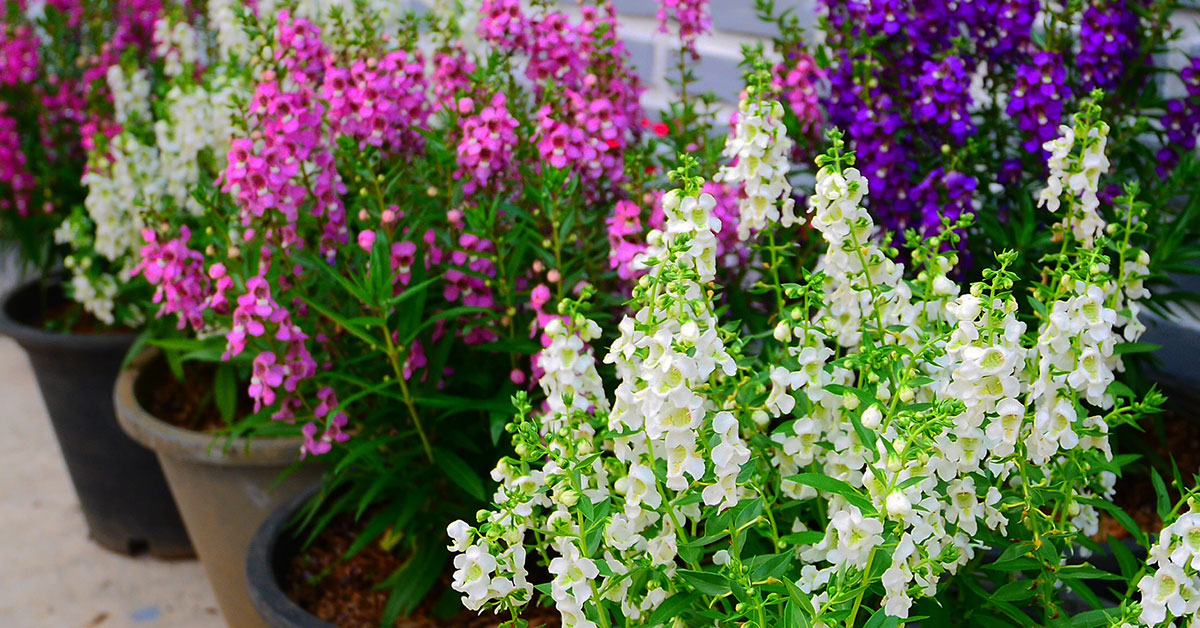Welcome to our comprehensive guide on finding the best fertilizer for Angelonias, the vibrant and resilient flowering plants that add a touch of elegance to any garden or landscape. Angelonias, also known as summer snapdragons, are beloved for their long-lasting blooms, heat tolerance, and low maintenance requirements. To ensure these delightful plants thrive and reach their full potential, it is crucial to provide them with the right nutrients.
In this article, we will explore the various factors to consider when selecting a fertilizer for Angelonias, including their specific nutritional needs, the different types of fertilizers available, and the application methods that yield the best results. Whether you are a seasoned gardener or a beginner looking to enhance your floral displays, this guide will equip you with the knowledge to nourish your Angelonias and enjoy a breathtaking burst of color all season long.
Do Angelonias need to be fertilized?
Yes, Angelonias plants benefit from regular fertilization for optimal growth. These plants are heavy feeders and require nutrients to thrive and produce abundant blooms. It is recommended to fertilize Angelonias every 4-6 weeks during the growing season, which is typically spring to fall. Use a balanced, slow-release fertilizer or a liquid fertilizer diluted according to the package instructions. This will provide a steady supply of nutrients to the plants and promote healthy growth and flowering.
The best fertilizer for Angelonias
For growing Angelonias, a balanced fertilizer with a ratio of 10-10-10 or 14-14-14 is generally recommended. This means the fertilizer contains equal parts of nitrogen (N), phosphorus (P), and potassium (K). These macronutrients are essential for plant growth and development.
Additionally, Angelonias prefer a slightly acidic soil pH, so you may want to consider using a fertilizer that is specifically formulated for acid-loving plants. This will help maintain the optimal pH level for their growth.
It’s important to follow the instructions on the fertilizer packaging for application rates and frequency. Generally, it is recommended to apply fertilizer every 4-6 weeks during the growing season. Over-fertilizing can lead to excessive vegetative growth and reduced flowering, so it’s important to avoid applying too much fertilizer.
Remember to water your Angelonias thoroughly after applying fertilizer to help distribute the nutrients evenly and prevent any potential burn to the roots.
When to fertilize Angelonias
The ideal time to fertilize Angelonias plants is in early spring, just as new growth begins. This will provide a boost of nutrients to support healthy development and encourage abundant flowering throughout the growing season. Additionally, you can continue to fertilize every 4-6 weeks during the active growing period to maintain optimal plant health. It is important to follow the instructions on the fertilizer packaging and avoid over-fertilizing, as this can lead to excessive foliage growth at the expense of flower production.
Common issues with fertilizing Angelonias
When fertilizing Angelonias, there are a few common issues or problems that can arise:
- Over-fertilization: Applying too much fertilizer can lead to excessive growth and weak stems, making the plants more susceptible to diseases and pests. It can also result in reduced flowering and overall plant health. It is important to follow the recommended dosage and frequency of fertilization.
- Under-fertilization: Insufficient fertilization can lead to nutrient deficiencies, resulting in stunted growth, pale leaves, and reduced flowering. Angelonias are heavy feeders, so it is crucial to provide them with adequate nutrients to support their growth and blooming.
- Imbalanced nutrient ratios: Using a fertilizer with imbalanced nutrient ratios can cause problems. For example, excessive nitrogen can promote lush foliage growth at the expense of flowering. It is important to choose a balanced fertilizer specifically formulated for flowering plants or use a slow-release fertilizer to ensure a steady supply of nutrients.
- Incorrect timing: Fertilizing Angelonias at the wrong time can also cause issues. It is best to apply fertilizer when the plants are actively growing, typically during the spring and summer months. Avoid fertilizing during the dormant period or in extreme weather conditions.
- Fertilizer burn: Direct contact of concentrated fertilizer with the plant’s leaves or stems can cause fertilizer burn, resulting in brown or yellow spots on the foliage. To prevent this, always water the plants thoroughly before and after fertilizing to dilute the fertilizer and ensure it reaches the root zone.
To avoid these problems, it is recommended to read and follow the instructions on the fertilizer packaging, monitor the plants closely for any signs of nutrient deficiencies or excesses, and adjust the fertilization regimen accordingly.













